Starting a Clothing Line: Step-By-Step Guide
All the successful brands that are ruling over the fashion industry once started in a small room, its commitment and dedication that turns into a victorious brands that the whole nation loves. Likewise you there are numerous passionate and dedicated graphics designers and entrepreneurs who want to start their own clothing line. But is starting a clothing brand is that easy that anyone can own brand to his name? Well, I'd say with the right strategic approach and smart business decisions, anyone can start a clothing business and own a brand. Still Hundreds of questions remains unanswered, to cover them all, here is a blog that tells you everything you need to know to start your own clothing brand in 2023.

Starting a Clothing Line: Step-By-Step Guide
Well, nothing is complicated, If you are provided with proper guidelines. The absolute truth behind the success of this clothing line is their passion for clothing. A clothing brand isn't just about trendy and exquisite apparel designs. Instead, your business brand also needs to be well equipped with the trappings of business to get customers.
A good clothing manufacturer needs to master several skills like marketing, manufacturing, production, development, and understanding of the market. All these powerful brands keep reminding us why it is essential to understand the business of clothing.
Now that you are here clearly tells that you are interested in owning a clothing business under their name. Having couple of questions in your mind is normal and by the end of this blog all of your questions will be answered, so stay till end of the guide.
Steps to starting a Successful clothing line
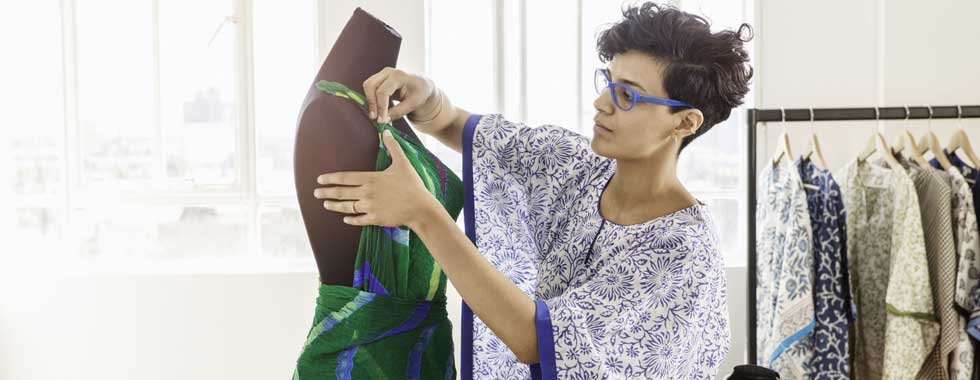
In this guide, we'll cover everything, the in and out of starting a successful line that sells. This blog will help you understand everything from scratch to a hundred about all the process of clothing line along with additional tips so that you outgrow in the market.
Without wasting any further time. Let's get started with this article
-
Polish your fashion designing skills
The successful designs of top fashion brands such as Nike and Louis Vuitton are considered top brands and found massive success in the fashion industry. These are the brand whose story is famous before the advent of the internet. Nowadays, we live in an era where tailoring can be quickly learned by watching a YouTube video and with just little practice.
Knowledge about the industry trends is an advantage, be sure to learn standards, design requirements, access resources, and equipment. Customers are looking for something unique that is appealing to the eyes, which is possible with design and experience.
So if you are good at designing, then with the right marketing strategies, nothing can stop you from reaching the target market and getting speedy sales.
Many schools offer courses on designing and fashion in different formats from where you can develop and polish your skills.
-
Develop a strong business plan
The plan is an essential component that helps critically assess the goals to see if they are realistic. Developing a business plan is an essential but significant step that'll help you map the decisions and help your control over the direction of your company.
At this step, you'll have to choose the goal for your brand. If you are passionate about the fashion designers then you might be thinking to start your own clothing brand. And if so is the case then it's pretty important for you have a well-defined business plan that focuses on your business goals, mission, visions, and objectives to acheive.
A strong business plan includes these significant elements
- Your business model
- Competitors analysis
- Competitors' strengths and weaknesses
- Costs & profits margins
Put some time into analyzing the end goal of your brand or clothing company, decide what kind of clothes you want to sell and what target group of the customer will be shopping from your clothing business.
This is one of the few things you need to know before starting a clothing line, as it will guide you later about the design, textiles, branding, and production.
-
Essential components of a good and strong business plan
- Company Overview: You can give a brief history of your clothing brand or business. Moreover, you can also outline what your business does.
- Executive summary: This part tells the critical information about the name of your company, company goals, values, mission, and vision.
- Products or services: In this part, you need to mention the marketing strategies you will adopt. You need to mention a detailed analysis of the customer you are targeting. You can also mention business trends, customer segmentation, demographics, etc.
- Marketing plan: Here, you need to mention the type of clothes you will sell and how it'll help you gain profit.
- The strategy of sales: : This includes information about how you will sell your products to your customers, your marketing channel, what will the pricing be, and how it can affect your pricing strategy?
- Competitive analysis: In this phase, you will analyze your competition. You need to provide a detailed analysis of your direct or indirect potential competitors.
- Production plan: You can present your production timeline, marketing details, and sales for your clothing.
- Operating plan: This part will define the operations of your business and describe the different functions of the stakeholders. This part mainly explains the daily working details of your clothing business.
- Financial analysis: Here, you will analyze the final budgeting of your clothing line, mentioning your initial investment and the timeline for generating profits.
A business plan will save you both time and effort and benefit a long-term business. Moreover, with a strong business plan, you can even extend the horizons of your business.
-
Identify The Need In the Market/ Find A Niche
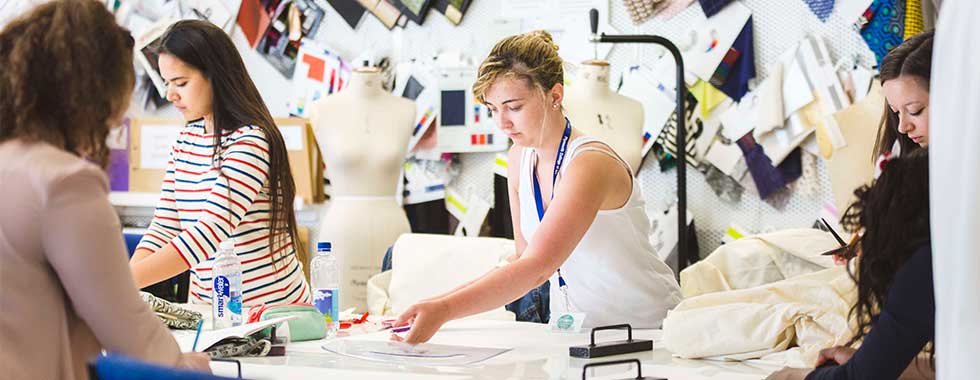
As a newbie, selling all types of clothes and investing your entire capital in different clothing lines is a bad idea. Instead, here you need to understand the market first. You need to research the niche that is not currently being filled or a niche that has a gap, and it can be anything such as sportswear, casual wear t-shirts, shorts,swimwear, hoodies, clothing line, or anything.
You need to find it and aim to bridge the gap between the customer and the product missing from the market. You will find a target market looking for the clothing niche you are picking.
You need to understand the market demand, consumer behavior, and trend and then change according to those fashion plans. So pick a niche you need to operate in and build your target market.
For example, 80 tees are famous for selling t-shirts with 80s shows and movie designs. This creates a unique image and brand presence in the market. Moreover, they are licensed to make TV shows and movies designed, so there are significantly fewer chances that you'll find their designs somewhere else in the market.
-
Research fashion trends
Visit different fashion shows, and follow TV shows, movies, and fashion icons to see what they are wearing and the new trend in the fashion industry. People have crazy love for their fashion ideals and they wish to style and look like them. So to attract the huge customer audience you can offer them clothes that celebrities are promoting an wearing.
To analyze and not down the new ideas and fashion ideas is by visiting the Fashion shows, fashion industry meet ups. Also you can take inspiration of new ideas and styles from the Movie, Tc shows and fashion documentaries, this way you can work on new ideas and design that will take you new heights in the clothing industry.
-
Identify your target audience
This is one of the most crucial steps, and your objective shouldn't be only to launch a clothing store and sell but also to have strong strategies to locate your target audience for the niche you are selling.
What is the point of selling crazy, trendy, eye-catching designs if there is no consumer market to buy that product? Pick up demographics, study them, analyze the customer behavior, and identify your customer.
Adopt the new ways of marketing like social media marketing, and you can easily reach to your desired group of target customers by applying the right strategies on social media channels like Facebook, Instagram, and more.
Good marketing allows you to connect with your target audience directly and potentially engage them with your clothing brand. By directly focusing on your target market, you can market your brand efficiently.
-
Develop your fashion branding

To make your brand line successful, you need to figure out how you can make your clothing line look stand out from others. The successful brand strategy is to hone their designing skills for the target market where they feel the most demand for their product.
Even if you are developing a luxury clothing brand that is already running by your competitors, you can offer a narrow down approach to it, like if you are launching a sportswear brand. You should consider launching comfortable Activewear for plus-size women too. Target new customers with this approach.
Here are a few key points you must keep in mind when launching your brand.
Design: One hallmark of success for popular brands in various industries today is their distinct collection of designs which set them apart. So, likewise you also need to work on unique patterns, designs, colors, and materials to attract the customers. One of the significant flexibility you have in customized clothing is that you'll be designing your clothing line.
Niche: You need to analyze and determine what your customers are getting and which type of clothing line you are offering.
Quality: Your product quality is the best proof of your brand. So, make sure you put the best materials to stand the quality of your brand. Your target customer will highly be disappointed if they find out that the clothing line you are selling falls apart or loses color after washing.
Brand: You need to consider how your brand will be represented among the customer target in the market.
You are advised to stay focused, try out new things, adopt the latest trends, follow the fashion, and think from a customer's point of view, making things easier for you.
-
Register your business

Now that you are all good with brand designing and demographics, have adequate knowledge about targeting your customers and even analyze the startup costs. It's time to do some paperwork that will allow selling clothes legally.
Steps that need to be taken:
- Determine and Register Your Business Type and State: First you should decide upon a type of license your company needs before registering in which state. In the clothing industry this might mean registering as a brand name with each state where your brand name operates.
You require to have all the business documents that includes the basic information about your brand like your brand name, business description, no of employees etc.
- Get business license & permits: To start your business, you will need a general business license to start your clothing business. And in case you are operating a business online, you might be needing couple of permits, such as a sales tax license. To avoid, any legal problems in future, you must acquire the business license and permits to operate.
- Employee identifier Number (EIN): When you open a firm, the IRS will provide you an Employee Identification Number (EIN) that serves as your company's identifier. Having one EIN will make it easier for you to submit your taxes, open a business bank account, and obtain business funding.
-
Find a clothing manufacturer
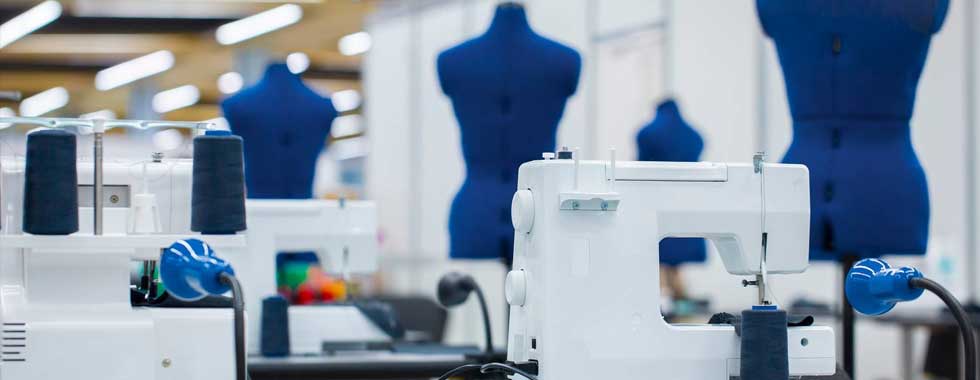
If you are not planning to source, cut, and sew clothes by yourself, you'll need a clothing manufacturer that works parallel right according to your requirements. Finding a clothing manufacturer can be a daunting process to follow.
Spotting the custom clothing manufacturer is a pretty tricky procedure. The internet is full of options when it's about custom clothing manufacturers. You can search for the best manufactures through search engine and within minutes you can have a list of hundreds of manufactures that you can further shortlist to find the best fit.
You need to consider several factors when choosing the clothing manufacturers like fabric sourcing, tech packs, sample development, bulk production, the scope of their work, and MOQ (Minimum Order Quantity).
Learn about: how to find a clothing manufacturer
-
Choose a brand name, logo, and market profile
Your business profile and description is equally important to create a good image of your brand among the customer. So you should have an effective and well defined business plan this will help you in creating your business profile over internet. You need to select your brand name, logo, and slogan (if you wish).
Consumers like the brand with a compelling story with their brand, so make sure your brand, logo, and slogan give an idea about your brand. When you are working with a manufacturer, you have couple of benefits one of them is like they buy you time in this timeframe you can focus on you brand marketing, you can run social media ads and campaign and aware them about your new clothing line that is on production. This way you can create hype for your clothing brand.
-
Set up your online presence
Nowadays having a physical store is not enough, you must have online presence too so that your customer have direct access to your products and services by sitting at their homes. You need a well responsive, appealing and creatively designed website that allows the customers to shop online. The website is an essential component of your clothing business. Put your clothing items on your website with product details so that customers can browse around.
Selling your clothes online is much easier, affordable, cost, time and effort efficient. More prominent brands that have captured a large market area are shifting their business online to cater to customers from home.
Create your e-commerce or custom-made website. Once you are done with it, diversify your sales channels by different platforms like social media, etc. Moreover, you can also join popular market places and sells your clothes there like eBay, Amazon, or Etsy.
-
Market your product and sell
Tell your story through the social media channels, raise brand awareness, and launch different campaigns and PR activities so that the consumer market comes to know about your brand. Share your content with the consumers.
Then, set your marketing and distribution goals in the marketplace. Another way to help you adopt new strategies is to consult the marketing professional and fashion industry experts.
Create your e-commerce or custom-made website. Once you are done with it, diversify your As soon as you hit your sales and distribution goals, look for growth opportunities in the market. This will help you explore different consumer markets and growth opportunities that you can fulfill.
-
Sell through multiple platforms
Selling your clothing line is multiple places in different market places was never a bad idea, instead a lot of clothing brand just become popular because of the availably in the different selling places which made the customers realize that what your clothing brand is about by making it more visible in the eyes of customers.
You can sell your clothing lines products under your own brand website or you can also create your virtual store in different market places like amazon, Ali baba, Ali Express, Etsy or more. These platforms are best market place that has millions of traffic of audience every hours on it. With so much traffic, there are pretty chances for your brand to get the tag of one of the top selling brand. You just need to make sure you sell a high quality product in affordable prices based on customer demographics measures.
Moreover, you can break down your website in two sections. Over one sections you can list your products and offerings for retailers, while the other section you can use it for customers.
You can sell to mid-sized business or retailers in bulk and little lower prices as they will buying in bulk quantities.
We understand the process of starting your clothing line is not easy. However, Steve Apparel mentions all the procedures and methods by which you can start your clothing brand.
How Much Does It Cost To Start a Clothing Business?

Nowadays, the internet has helped many people start their new clothing line, resulting in the growth of the fashion industry day by day. However, people are often concerned about the cost of starting a clothing brand. As there are numerous clothing manufactures in the market, so it basically the cost of starting a clothing brand might vary from country to country. Also custom clothing manufacturer plays an important part in the brand making process. All custom clothing manufacturer aren't right for your business, so you have to find the best fit by researching them
According to US Small Business Administration, to launch a clothing line business in America it'll cost your around $2000 to $5000.This is just a lump sum amount, and your startup business can cost lower or more.
Here is a rough distribution of estimated costs for your startup clothing line business:
- Manufacturing costs
- Costs of Materials and products sourcing
- Designing and Delivery costs
- Website and Marketing costs
- Product photography costs
- Distribution costs
Manufacturing costs are the highest costs in creating a fashion line, and these costs vary based on your clothing line and how you are buying the clothing products.
A business plan can help you break down the startup costs of launching your business. Your business plan will help you plan effectively. You can set different targets to achieve. Moreover, a good business model ensures that you have enough money for your clothing business to succeed.
It mainly depends on working with a custom clothing manufacturer or buying pre-made clothes. Here is a detailed guide about costing when starting a clothing brand.
Equipment Needed To Start a Clothing Line
Whether you will be working as a clothing manufacturer by yourself or hiring one to make clothes according to your needs, you will need a couple of equipment. The essential must-have thing is creativity and an eye to notice details in both cases.
Aside from it, you will need some basic materials, putting the technical things like cutting and sewing machines apart, you'll need clothing patterns, a collection of different types of zippers, buttons clasps, hangers, shopping bags, gift boxes, display cases, flyers, posters, banners, shelves and racks and a lot more.
There aren't only one or two things that you need to have when starting a clothing brand. However, here is a detailed guide on the equipment needed to start a clothing line.
Things You Need To Know Before Starting a Clothing Line
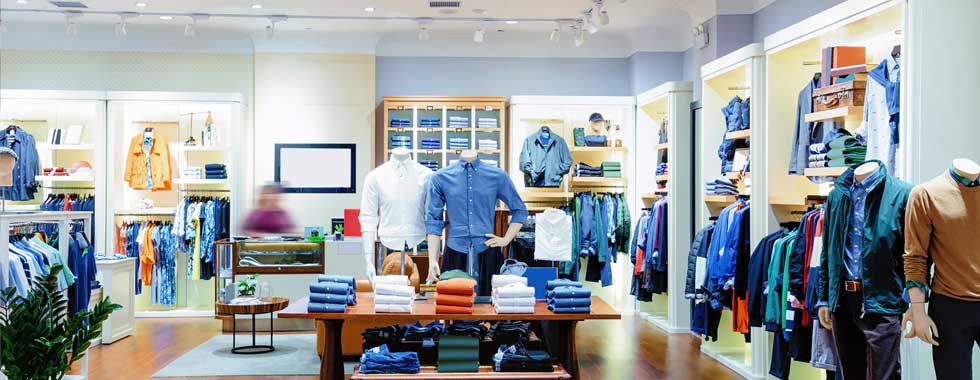
Those who need to start a clothing brand of their own strongly need to understand the picture. It will navigate you throughout the process at every step of your clothing business journey. Here are some of the must-check that you critically need to focus on, whether you picked your business partners.
Initially it will feel confusing that from where you should start when starting your own clothing brand, but try to divide things into multiple stages, things get simpler when divided. We have made a predefined checklist that you can use as your business strategy to create your brand easy to manage and successful.
Opening a clothing brand looks a little complicated, but things become much more manageable when broken down into steps.
Have a look at the big picture:
- Have an idea that fills the gap
- Do market research
- Target your customer
- Setup your clothing business
- Get tech packs ready
- Source fabrics
- Find the proper clothing manufactures
- Get the sample ready and approved
- Marketing
- Order your bulk production
Important Advice: Suppose you have launched your clothing brand successfully, you are getting orders, the inventory is up to date, and then suddenly you started having less sales, less customer engagement. One of the major reason behind this sales in drop is that you stopped focusing on marketing your clothing strategy. Marketing strategy need to adjusted and updated after every while, with a marketing strategy that is clever, wise and effective, you will more customer engagement, sales, and your brand awareness will increase. So you must not stop working on your clothing line marketing.
for all those brands who are selling online and targeting their customers online, it's very critical for them to have a social media or brand marketing strategy. The social media marketing strategy involves the marketing on social media apps, running ads and pay per click campaigns, email marketing, influencers marketing and more. Internet is a wide space and there is no better way than marketing to reach your potential target audience.
What Are Some Terms That Everyone Should Know For Starting Up a Clothing Line?
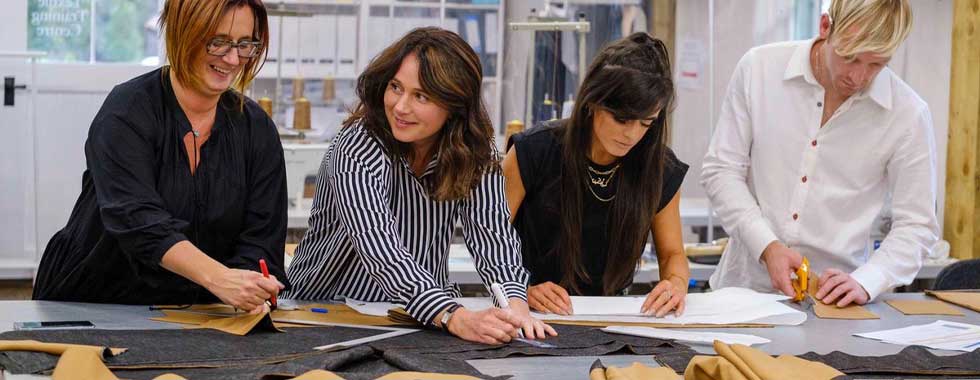
Anyone new in the apparel industry is more likely to get confused between the fashion industry terms like patterns, tech pack, Print on Demand, Silk screen printing, and much more, but no need to worry. With time you get along with all of these terms quickly. Here are some of the common terms that are widely used in the clothing industry.
Whole seller/ Distributor
A Whole seller/ Distributor purchases from the clothing companies and then ships the product to their warehouses. And then ships your products to you.
Resale license
A Resale license means that with this license, you can easily buy whole sell or distribution goods without paying the sales tax. It's a permit to run a business within the state.
Decorator or manufacturer
A decorator or manufacturer is someone who puts the design over your clothes according to your requirements. This can be your design, artwork, screen printing, embroidery, custom labeling, etc. They can be called print Demand Companies.
They are also known as the manufacturer of your clothes because you can also be able to purchase clothes and customize them- a stop-shop for all your needs like Steve Apparel.
POD or Print on Demand
Commonly used terms in the e-commerce business or when selling online, most of them want a unique design on their shirt. This could be anything. Your customer can quickly tell or elaborate on their design requirements, and you need to fulfill those requirements as a seller.
Drop shipping
It refers to when the manufacturer of printing on demand directly ships the order to your customer's doorstep.
DTG (Direct to Garment)
This is an advanced method of printing where the design is ready and printed simultaneously over your garment. Most POD manufacturers use the DTG method to design your clothes.
Screen printing
One of the most traditional ways in the printing industry. Different screens for each color are set together for this method, and then each color is printed over the shirt. It's a standard printing method for small quantities.
Blank shirt
As the name says, it'll be a blank readymade shirt you can customize with your design or artwork.
Cut and sew
This means that you are getting started from scratch. You cut the shirt according to your size and then sew it along with the custom design for your t-shirt.
Fabric weight
It refers to the weight per square foot of fabric of the shirt. The heavier fabrics results in the weightage of the end products. If a clothing line is made up of much heavier fabric, it might become a problem to consider. Or you can choose the heavier fabric for some particular type of products like coats. So if you want to manufacture a lightweight T-shirt clothing line, you must pick a lightweight fabric.
Single count
It defines the number of cross-sections in the t-shirt with 1 square inch of fabric. With the fabric's tighter knit and soft feel, you will likely get the higher single count.
Silhouette
This means the styling or the cutting of the shirt.
Triblend
Triblend is the softest and lightest shirt in terms of fabric and feel. It's made up of cotton polyester and rayon. It's a perfect fit giving a vintage feel and the comfort factor.
E-commerce platform
So, as we told you before, e-commerce is when you sell online to the customer. You can set up an e-commerce website where your traffic will drive, generating sales from there.
Market place
A marketplace is like a directory or larger website where your store and other stores are present. Customers have different options in the marketplace, like Amazon, Walmart, eBay, etc.
Do I Need a License to start a clothing line?
To be a clothing brand that is a trusted source for its target audience, the clothing brand needs to be registered in the state in which they are working. Whether you have a physical presence in the market as a brick-or-mortar clothing store or an online presence, you will need a license and permits from the government to start your clothing business peacefully.
To operate legally and avoid tax hassles, the best practice for you is to register your business in the state where you sell the products and services. This will make you an authorized entity to manufacture and sell clothes to customers. Brand owners who hire manufacturers to make clothes also need a license.
Follow the whole procedure of registering your clothing business.
Is it Profitable to Start a Clothing Line?

Yes, everything is worth it if you have enough passion. With the right team of people you are working with, you say that starting a clothing brand is worth it. So, we can say that opening a clothing brand is worth it. You need to be willing to run a clothing business.
A good reputation makes your business successful, whether online or in a physical store, because that attracts the consumer's eyes toward your brand. On the other side, a lack of preparation or no planning leads to underperformance.
Is Starting a Clothing Line Worth It?
Yes, everything is worth it if you have enough passion. With the right team of people you are working with, you say that starting a clothing brand is worth it. So, we can say that opening a clothing brand is worth it. You need to be willing to run a clothing business.
You need a concept or idea for great clothing, and here starts the initial stage of your business. You might have aesthetic designs but couldn't find the right clothes to get your line into the market. Finding the right customer group or target audience is equally important for your clothing line as having a clothing line to sell. To approach your target audience efficiently, you need to consider several factors as a seller.
One of the greatest benefits of opening a clothing line business is that you are your own boss, no one commands you, and you can work on most creative ideas without any approval. In the business's initial stages, you will work 24/7 as an entrepreneur. An entrepreneur is someone who makes a great idea happen.
You can start with one of the recent trends in the market: the private label clothing that most brands and businesses are jumping into. Brands and businesses produce more private-label clothing as it provides easy and flexible options. The manufacturer develops a blanks shirt that lets the customer purchase the blank t-shirt and customizes it according to style, and the brand can place its brand logo.
FAQS
Do I need a license to sell a clothing line?
Every business in the USA needs a license to operate legally and become a trustworthy source. Generally, you need an Employee Identification number if you have employees working for your brand. Moreover, you will also need an Apparel certificate or garment certificate.
You'll need a license from the state you are working in.
Is it profitable to start a clothing line?
Yes, since the fashion industry is growing day by day, creating new opportunities for new brands. All you need is a unique idea and a good manufacturer partner on your side to manufacture your clothing line. And with dedication, consistency, and efforts, your clothing business can be profitable.
Is starting a clothing line worth it?
Yes, it's worth starting a clothing brand. You need the unique ideas on your side for your clothing line, and be sure to target the right audience. By studying the demographics, you can easily win the game in the marketplace.
